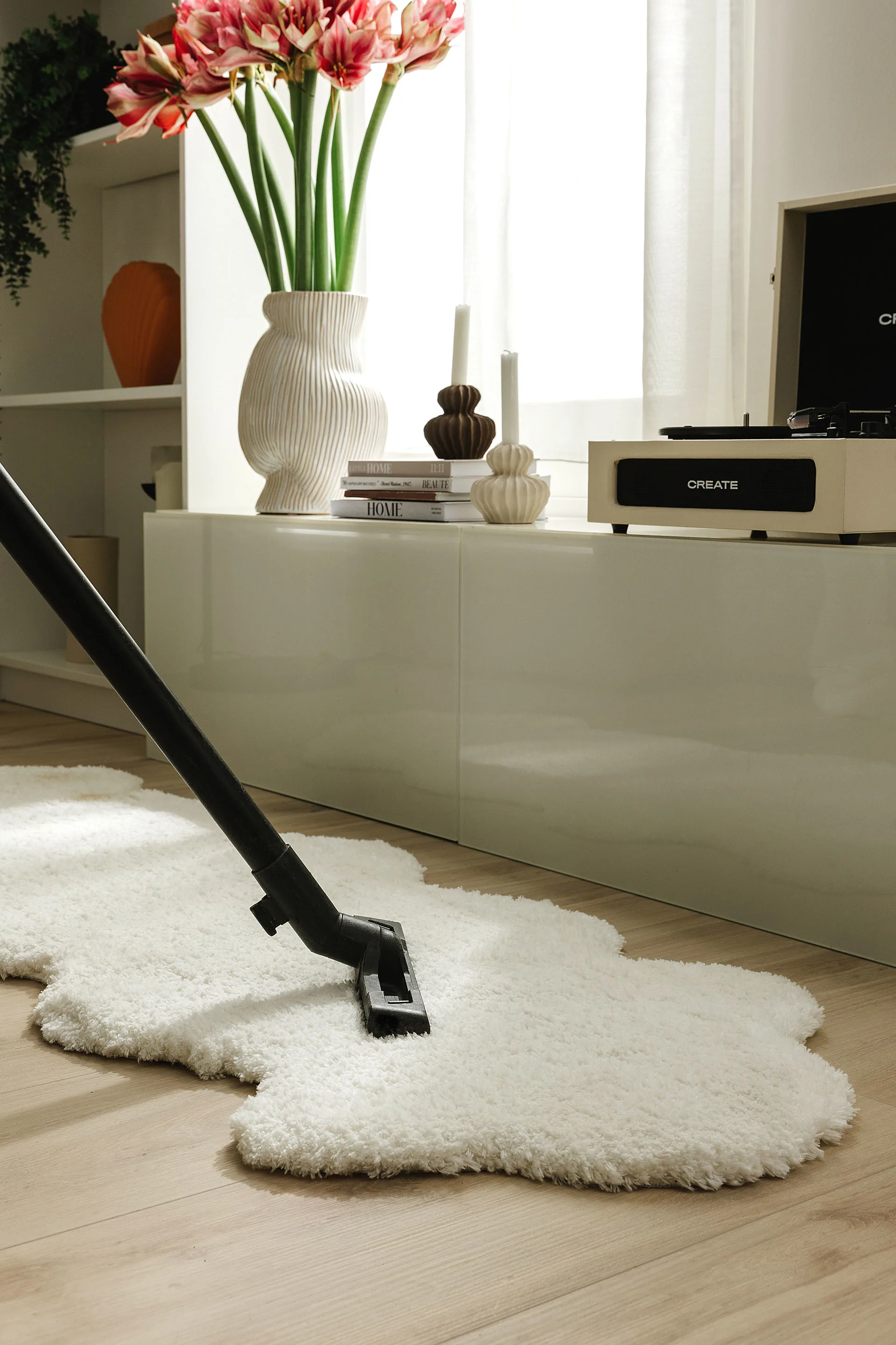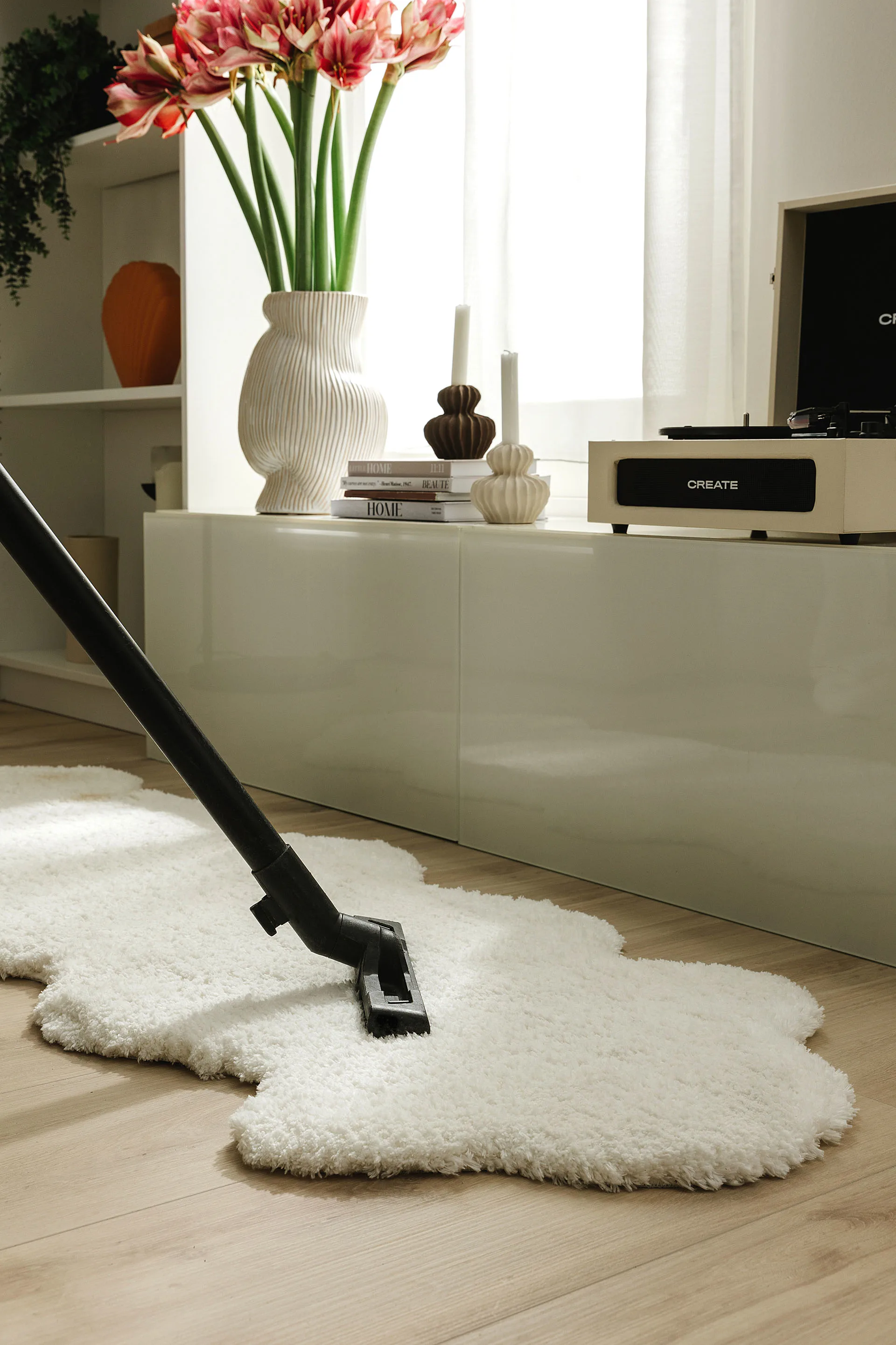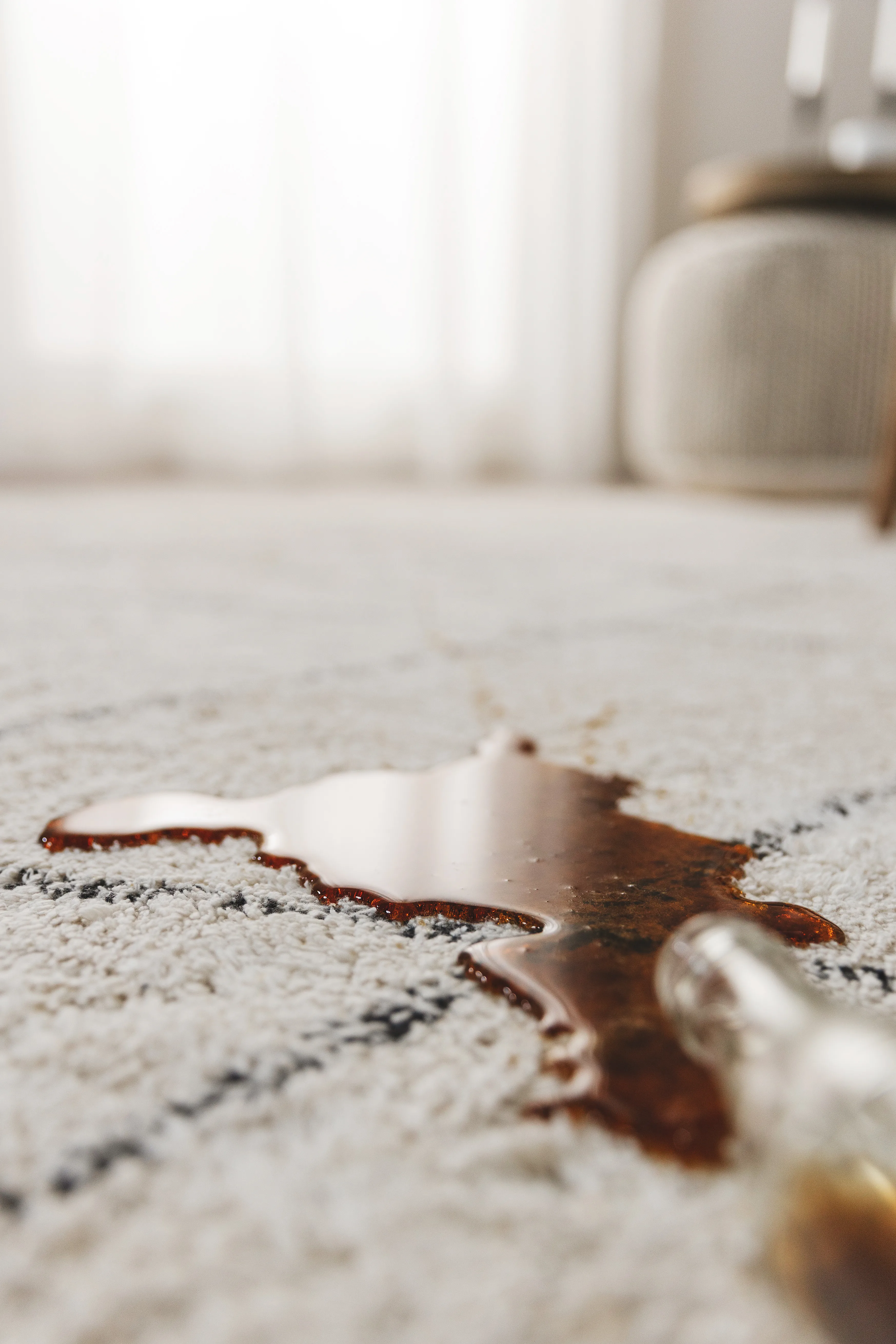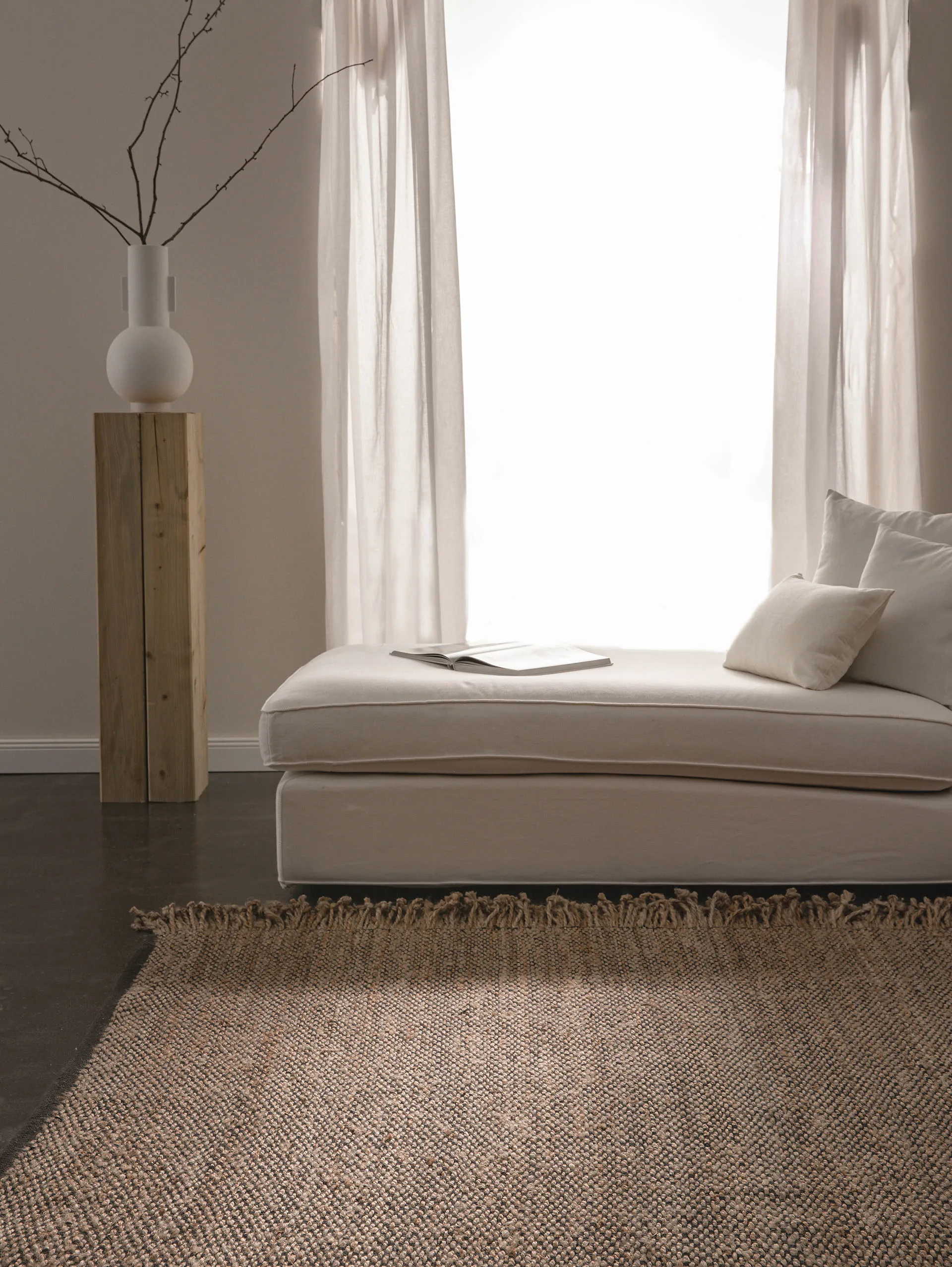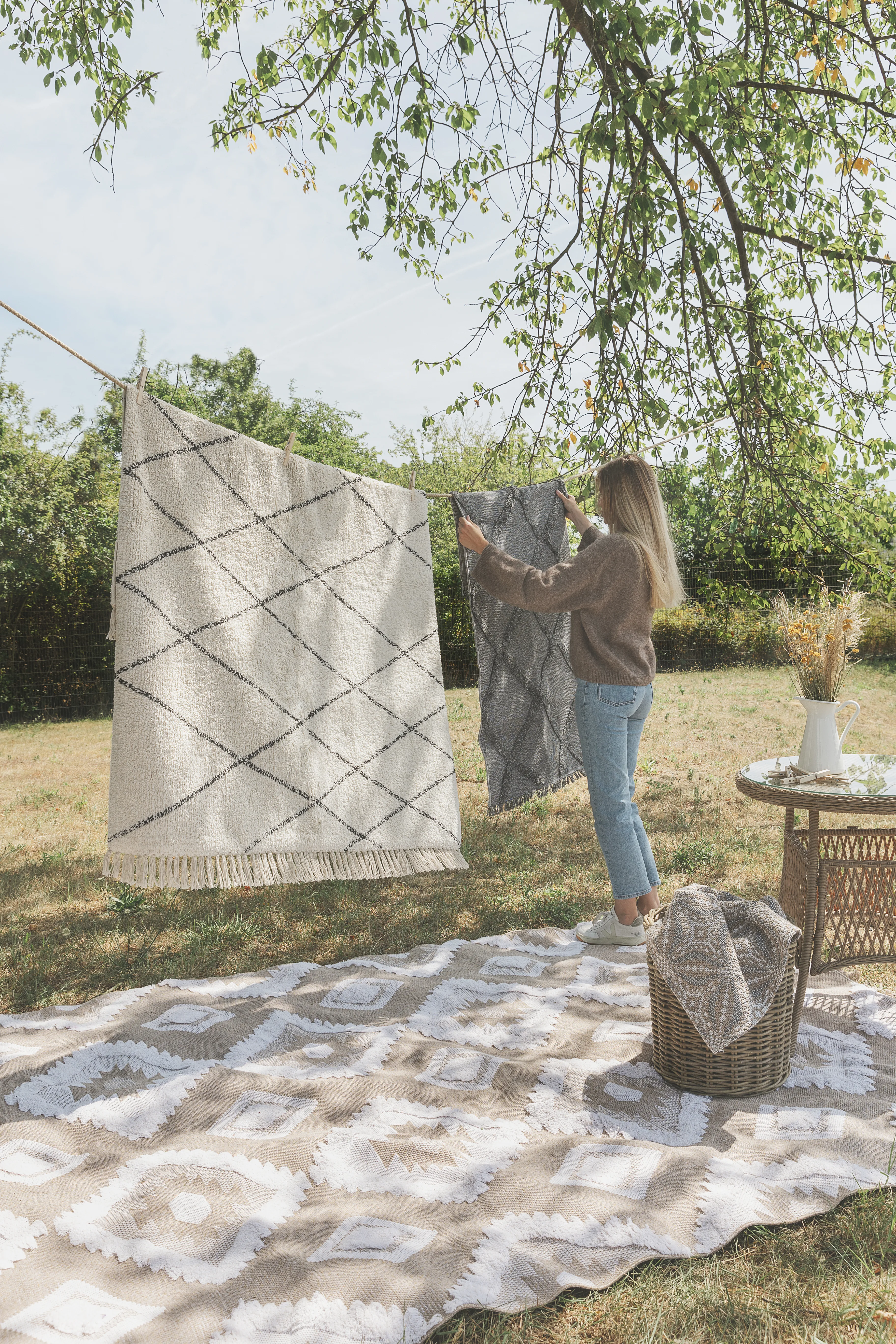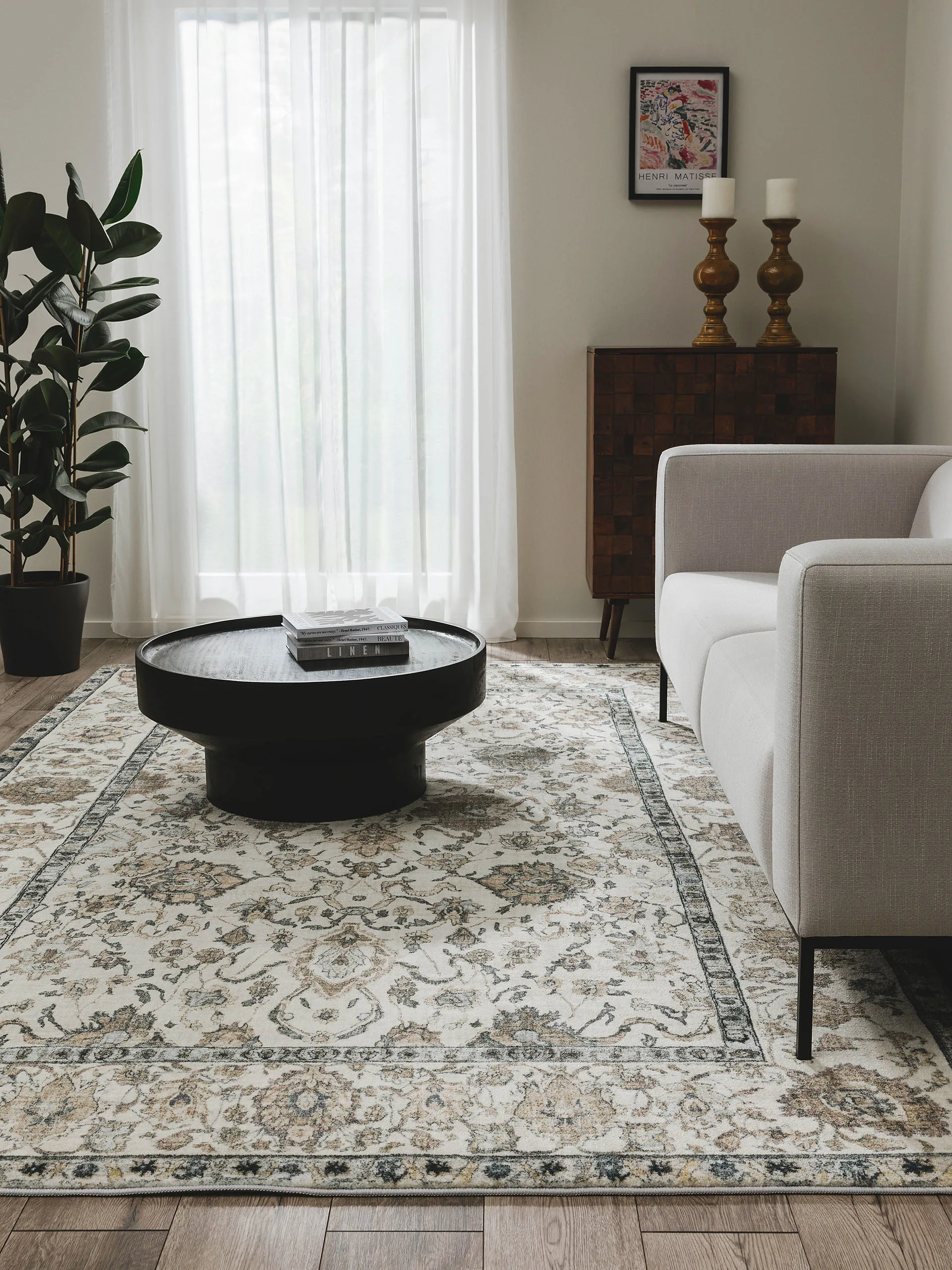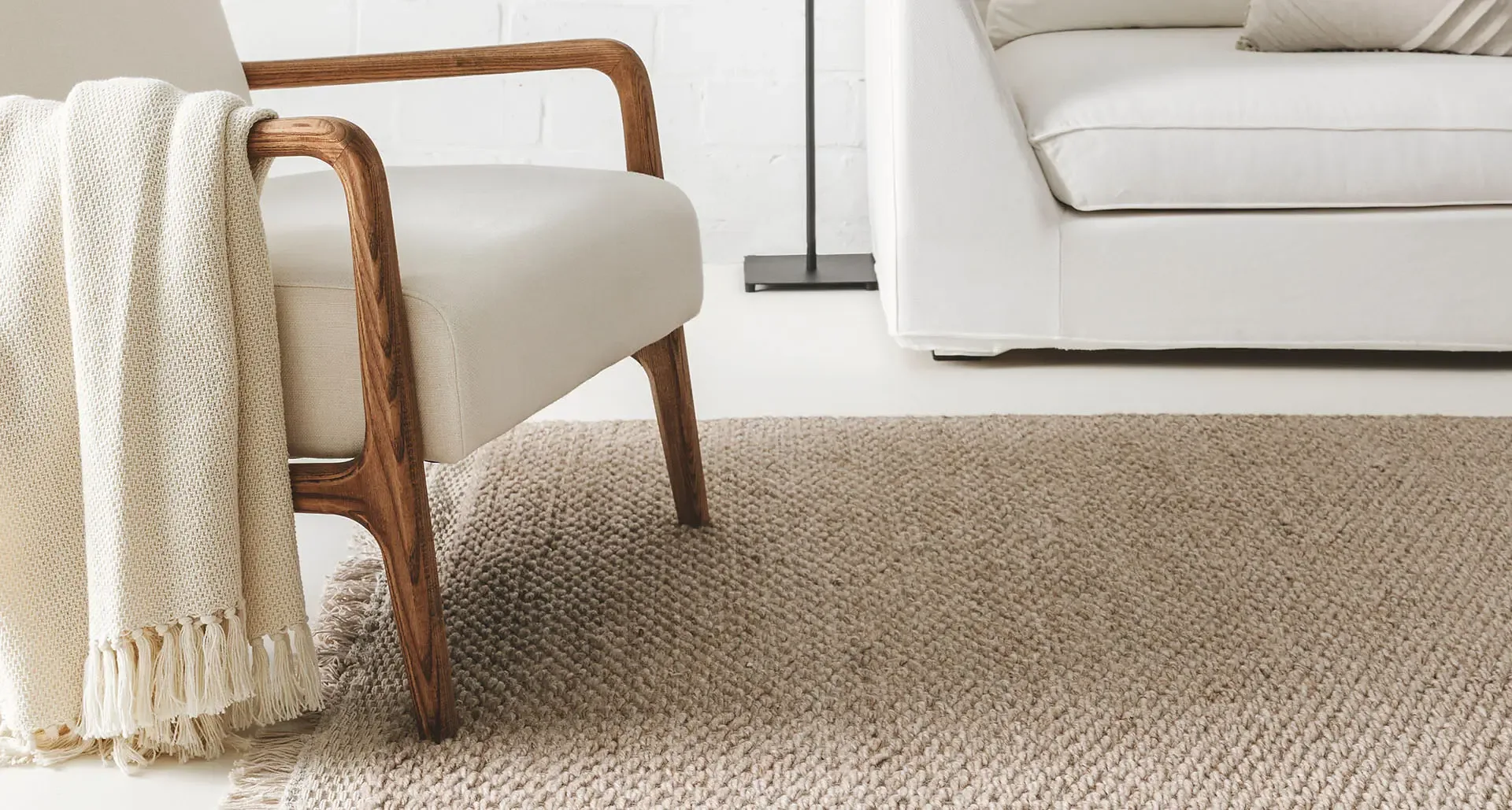1) Basic Cleaning
Vacuum regularly
How often you vacuum your rug depends on its condition and use. If it is in a heavily used room, such as the hallway, dining or living area, we recommend daily vacuuming. In the bedroom, once a week is sufficient. Remember to clean the back of the rug as well. In case of acute dirt, you can of course vacuum more often. If you suffer from allergies, there are a few special things you should consider when vacuuming. You can read more about this in our blog article on rugs for allergy sufferers. Also you can find more information about the different rug materials below.Knocking, dusting & airing out
Ideally, you should beat out your rugs once a year. This will remove deeper dirt. It is best to use a rug beater. Then let your rug air out in the fresh air to remove unpleasant odours. Please note: rugs made of viscose are excluded from this procedure, as these designs are particularly sensitive. Beating them out can damage the structure of the fibres.
2) Deep Cleaning
We recommend to get your rug cleaned by a professional every three to five years. If your rug is washable according to the manufacturer, you can also clean it yourself. Whether you wash it in the washing machine or by hand, we have summarised the best way to do it in our rug washing blog article. Tip: If you can't wash your rug, you can get it clean again with a cleaner.

